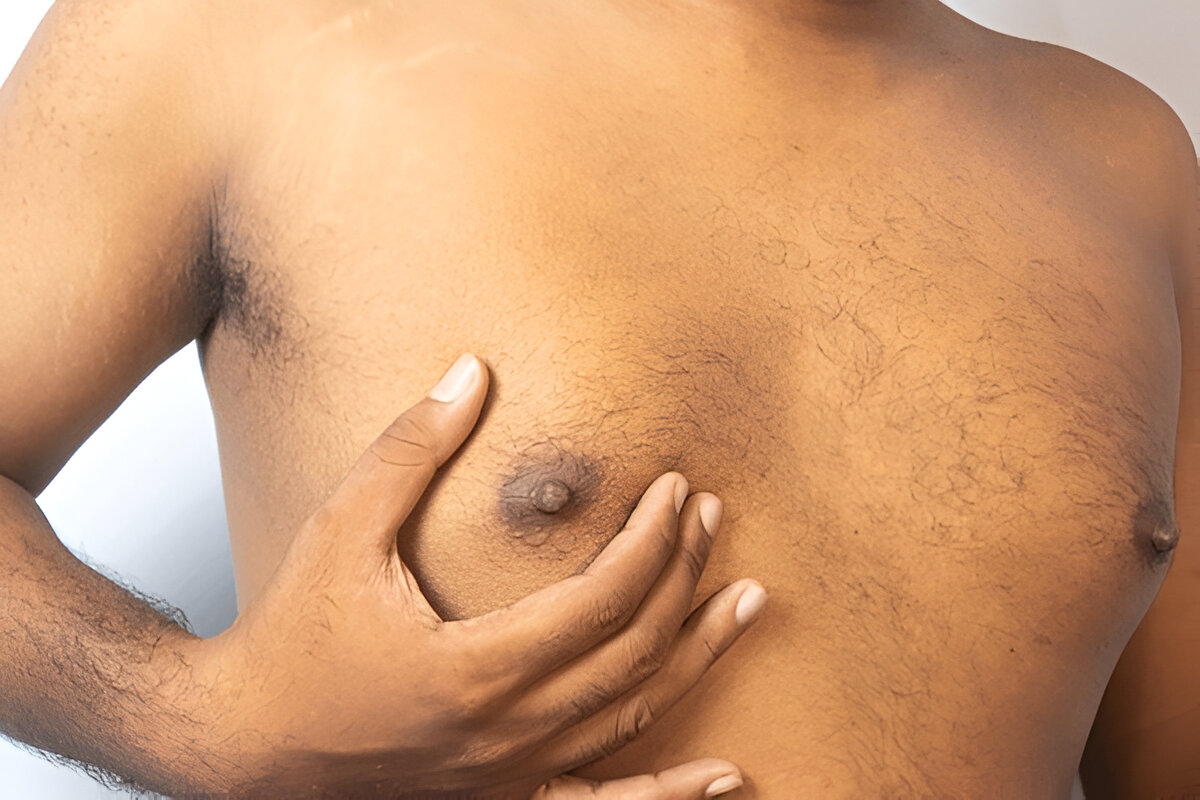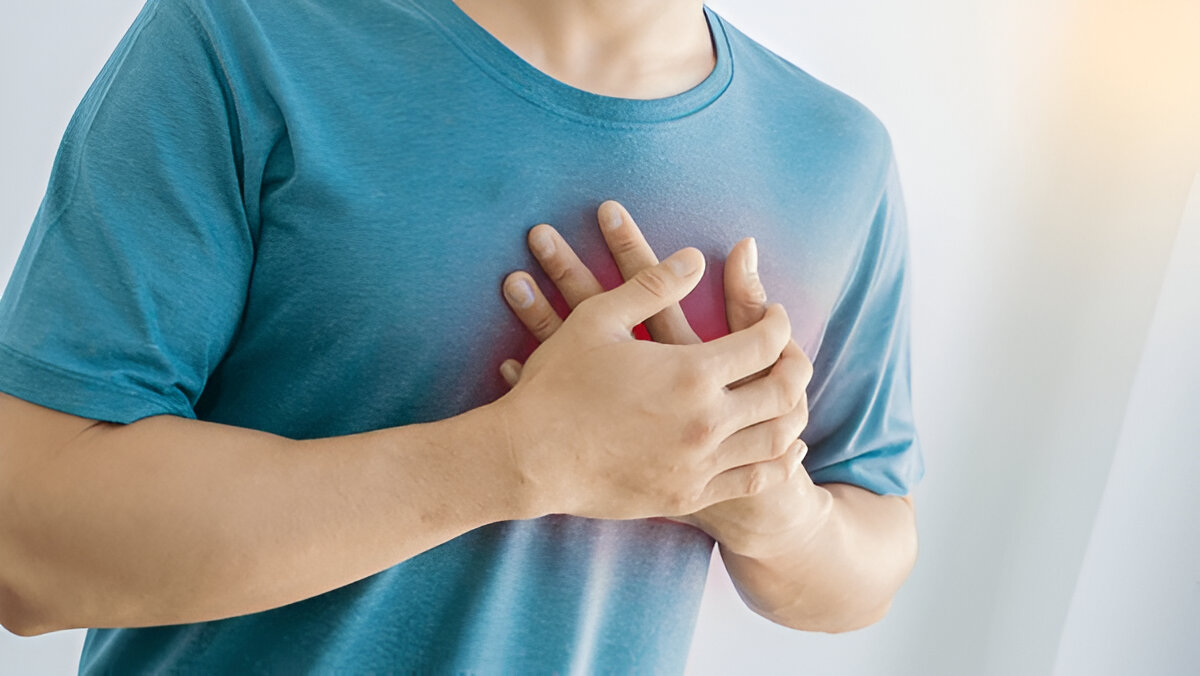What Does Gynecomastia Pain Feel Like?
Gynecomastia, which involves the abnormal growth of breast tissue in males, is a common issue affecting many men and boys worldwide. While often discussed in terms of its cosmetic impact, a less talked-about but equally important aspect is the discomfort and sometimes significant gynecomastia pain it can cause.
For individuals experiencing this, the question, “What does gynecomastia pain feel like?” is often paramount. This blog will seek to discuss the many sensations of pain that come with gynecomastia, its possible causes, and pain relief alternatives.
It’s crucial to understand that not everyone with gynecomastia experiences pain. For some, it might be a purely aesthetic concern. However, for others, the physical discomfort can range from mild tenderness to a more intense and persistent ache.
Pain levels and characteristics may vary depending on what’s causing the issue, the extent of breast tissue growth, and how much discomfort a person can tolerate.
Deciphering the sensations: What does gynecomastia pain feel like?
The experience of gynecomastia pain is subjective, but several common descriptions emerge. Many individuals describe it as a:
Tenderness: This is the most frequently reported sensation. The breast tissue may feel sensitive to the touch, even from light pressure like clothing. This tenderness can be localized to the nipple or spread throughout the enlarged breast tissue.
Aching or soreness: A dull, persistent ache, similar to muscle soreness after exercise, can be another hallmark of gynecomastia pain. This ache might be constant or intermittent and can sometimes radiate to the chest area.
Pulling or stretching sensation: As the breast tissue grows, it can feel tight or stretch in the chest area. This sensation might be more noticeable during movement or specific activities.
Sharp or stinging pain: The pain can sometimes be sharper or stinging, particularly during rapid growth or inflammation. This type of pain might be more localized and intense.
Sensitivity or increased nipple sensation: The nipples can become more sensitive or even painful. This increased sensitivity can be exceptionally bothersome and contribute to overall discomfort.
Fullness or pressure: Some individuals describe a feeling of fullness or pressure in their chest, even if it’s not strictly painful. This sensation can still be uncomfortable and contribute to body image issues.
The intensity of these sensations can fluctuate. There may be days with just slight discomfort, but at times, the pain can intensify, affecting everyday tasks, rest, and overall life quality.


Can gynecomastia cause pain? Exploring the reasons behind the discomfort
The question “Does gynecomastia cause pain?” has a clear answer: yes, it can. Several factors can contribute to the development of pain associated with gynecomastia:
Hormonal fluctuations: Gynecomastia often arises due to an imbalance between estrogen and testosterone levels.
These hormonal shifts, particularly increased estrogen activity, can stimulate breast tissue growth and lead to inflammation and tenderness. This is particularly common during puberty, in newborns, and older men experiencing hormonal changes.
Rapid tissue growth: When breast tissue enlarges quickly, it can stretch the surrounding nerves and tissues, leading to pain and discomfort. This rapid growth is often associated with hormonal fluctuations or certain medications.
Inflammation: The underlying processes causing gynecomastia can sometimes involve inflammation within the breast tissue. Inflammation is a common source of pain and tenderness.
Underlying medical conditions: Conditions such as liver, kidney, or thyroid disorders, which are linked to gynecomastia, can additionally cause overall body discomfort that may be felt in the chest.
Medications and substances: Some medicines and recreational drugs can cause gynecomastia as a side effect. These substances can also contribute to inflammation or hormonal imbalances that lead to breast pain.
It’s important to note that while breast pain in men can sometimes be a symptom of breast cancer, this is rare. Persistent discomfort, new breast changes, or nipple discharge should never be ignored and must be checked by a doctor to eliminate the possibility of a serious condition.
Seeking relief: Gynecomastia pain relief strategies
For those experiencing gynecomastia pain, finding effective relief is a priority. A number of approaches may help ease the pain.
Over-the-counter pain relievers: To manage pain and inflammation, options like ibuprofen and acetaminophen can be useful, but make sure to follow dosing instructions and consult a physician if you’re dealing with other health conditions or taking additional medications.
Cold or warm compresses: Using a cold pack can help soothe the area by decreasing inflammation and providing a numbing effect. Warm compresses can sometimes soothe aching muscles and improve blood flow. Experiment to see which offers more comfort.
Supportive clothing: Wearing a supportive compression vest or tighter-fitting shirts can help minimize movement of the breast tissue, which can sometimes exacerbate pain.
Avoiding irritation: Be mindful of clothing or activities that pressure or irritate the breast tissue.
Addressing the underlying cause: If the gynecomastia is caused by a specific medication or underlying medical condition, addressing that issue may help alleviate the pain. This requires consultation with a medical professional.
How long does gynecomastia pain last? Understanding the timeline
Answering “How long does gynecomastia pain last?” isn’t straightforward, as it depends heavily on the person and what’s causing the condition.
Pubertal gynecomastia: Pain associated with pubertal gynecomastia is often temporary and tends to subside as hormone levels naturally balance out, usually within a few months to a couple of years.
Gynecomastia due to other causes: If gynecomastia is caused by medications or underlying medical conditions, the pain may persist as long as the causative factor is present. Addressing the underlying issue may lead to pain relief.
Idiopathic gynecomastia: In cases where the cause of gynecomastia is unknown (idiopathic), the pain may be intermittent or chronic.
What about post-surgical pain? How long does pain last after gynecomastia surgery?
For individuals who opt for surgical correction of gynecomastia, some post-operative pain is to be expected.
Pain after gynecomastia surgery usually lasts anywhere from a few days to a few weeks. The initial days after surgery might involve more noticeable pain, swelling, and bruising, which can be managed with prescribed pain medication. The discomfort gradually subsides as the tissues heal.
Mild tenderness or tightness might persist for several weeks or even months. Diligently following your surgeon’s post-operative care instructions minimizes pain and ensures proper healing.
Seeking expert guidance for gynecomastia pain
Suppose you are experiencing persistent, severe, or accompanied by other concerning symptoms. Dr. Hasan Ali will thoroughly evaluate the cause of your gynecomastia and the associated pain.
He can offer personalized advice on gynecomastia pain relief strategies and discuss treatment options, including surgical intervention. Understanding the nature of your pain and exploring available solutions can significantly improve your comfort and overall well-being.
Don’t let gynecomastia pain control your life. Reach out to Dr. Hasan Ali today to book your consultation and start your journey toward lasting relief. Together, we can create a tailored plan to restore your comfort and well-being.
